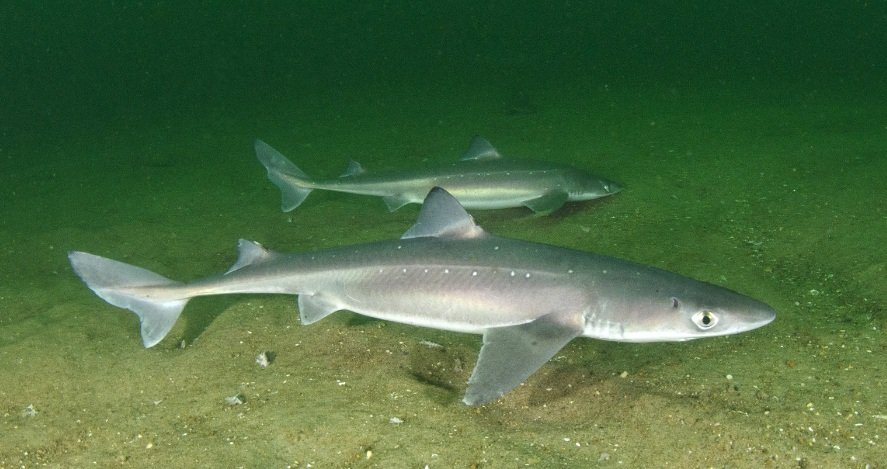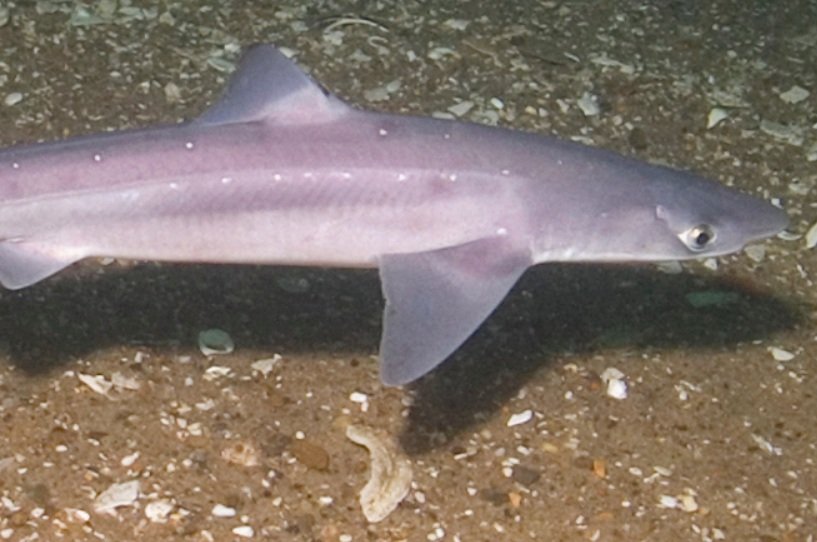
Top 10 Fascinating Facts and Characteristics of Spiny Dogfish
Small and long-lived, the Spiny Dogfish (Squalus acanthias) is a species of shark found worldwide in temperate and subarctic seas. This cartilaginous fish, also known as the spurdog, can be identified by its grayish-brown color, slender body, and sharp spines on the dorsal fins. In coastal habitats, the spiny dogfish, one of the world’s most common shark species, functions as both a hunter and a prey in an important ecological role.
It is frequently used in seafood markets for items such as fish and chips and fish cakes, and its firm, white flesh is highly sought after commercially. However, concerns over the sustainability of spiny dogfish populations due to overfishing have prompted attempts to promote ethical collecting techniques and fisheries management measures. Understanding the biology, behavior, and population dynamics of this resilient shark species is still a major focus of research to inform conservation tactics and maintain the health of marine habitats.
Origin and location of Spiny Dogfish
Squalus acanthias, also known as the Spiny Dogfish, is a type of shark found in waters worldwide. These sharks’ characteristic spines on the front of each dorsal fin make them unique and act as protection against predators. Typically weighing around 20 pounds, spiny dogfish may grow to lengths of up to 3.2 feet. They may blend in with their environment because of their grayish-brown coloring and white markings.
Feeding Habits and Reproduction of Spiny Dogfish
Carnivorous predators, such as spiny dogfish, mostly eat tiny fish, squid, and crustaceans. Their keen teeth make them ideal for snaring and devouring their prey. These sharks’ females give birth to live young instead of depositing eggs, making them famous for having a high reproductive rate. Spiny dogfish have a gestation period of around 22 months during which a female may give birth to a brood of up to 6 pups.
Role in Marine Ecology and Conservation of Spiny Dogfish
Despite their small size, spiny dogfish are important predators and prey in marine environments. They contribute to the general equilibrium of the ocean food chain by controlling the numbers of their prey species. Humans consume spiny dogfish flesh, and their fins are traded for shark fins, making them an important commercial resource. In order to avoid overfishing and preserve the function that spiny dogfish play in the marine ecosystem, conservation measures are taken to guarantee the sustainable management of spiny dogfish populations.
Insights into the Spiny Dogfish: Characteristics and Behavior
The spiny dogfish is an intriguing shark species with distinct traits and habits. It is a species that is valuable to research and preserve due to its adaptability to many conditions and significant contribution to the marine ecology. We can assist in ensuring the long-term survival of this amazing species by putting into practice sustainable fishing methods and conservation initiatives.
Physical Features and Size of Spiny Dogfish
The spurdog, often referred to as the mud shark or spiny dogfish, is a tiny shark species that inhabits waters worldwide. The following are some intriguing details regarding this amazing creature:
Habitat and Distribution of Spiny Dogfish
Both inshore and offshore, cold temperate seas are the main habitat of spiny dogfish. They live in both the North Pacific Ocean, which stretches from Alaska to California, and the Atlantic Ocean, which stretches from the Gulf of Maine to Florida. These sharks are renowned for their capacity to withstand a broad variety of depths and temperatures. They may be found at a variety of depths, from the shallow coastal waters to the 1,500-foot range.
Behavior and Diet of Spiny Dogfish
The schooling habit of spiny dogfish is well-known; they often form large groups that may number in the hundreds or even thousands. Due to their strong migratory nature, they will go great distances in pursuit of food and favorable environments. The diverse food of spiny dogfish, which are opportunistic predators, consists of tiny fish, squid, crabs, and other invertebrates. Because of their high metabolic rate and reputation as voracious eaters, they are able to devour a lot of food in relation to their size.

Reproduction and Lifecycle of Spiny Dogfish
Ovoviviparity is the name for the spiky dogfish’s special reproductive method. This indicates that the fertilized eggs are held within the female’s body until they hatch and give birth to living offspring. The maximum length of the gestation period is 24 months. Typically, female spiny dogfish give birth to a litter of two to eleven pups, each of which is born fully grown and prepared to survive on its own. The puppies are really little adults in a smaller body, and they can swim and seek food right away.
Conservation Status and Preservation Efforts of Spiny Dogfish
The International Union for Conservation of Nature (IUCN) has the spiny dogfish on its list of threatened species. Their population has been seriously threatened by overfishing because of their economic value for meat, liver oil, and fins. In recent years, the spiny dogfish fishery has been managed and regulated in an effort to maintain its sustainability. To safeguard the species and facilitate population recovery, it is necessary to implement catch quotas, size limitations, and seasonal closures.



